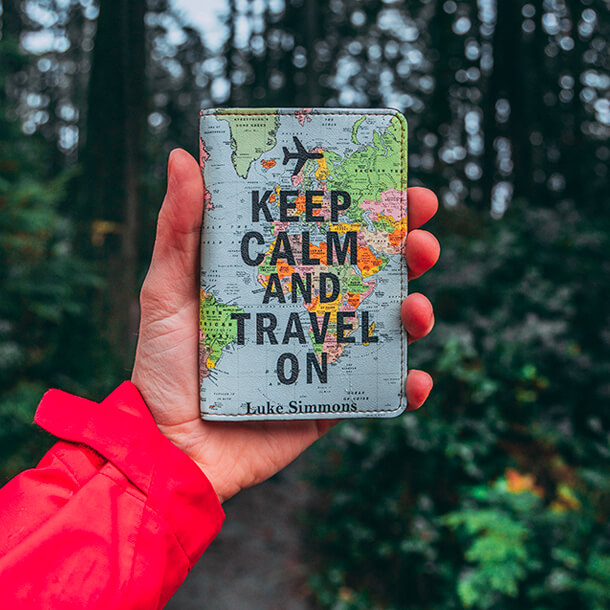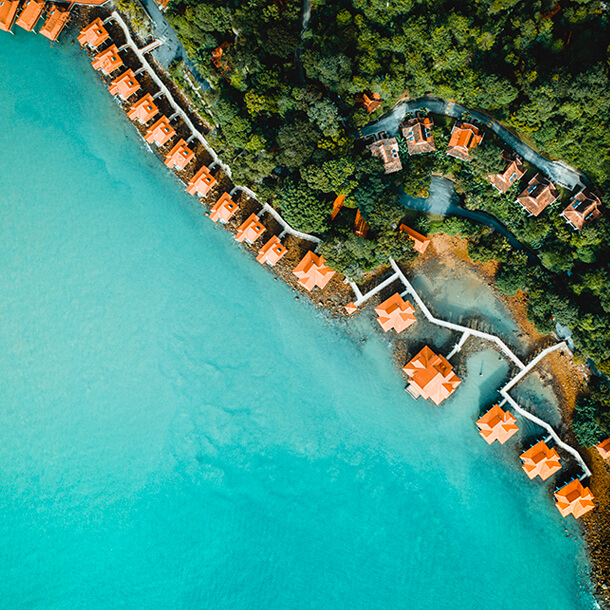Backpacking is one of the most enjoyable and rewarding ways to explore the outdoors.
It can also be one of the best ways to capture unique and original photos away from the crowds and “hot spots.”
Understanding how to properly pack your backpacking pack is key to having a comfortable and enjoyable trip backpacking trip.
A poorly-loaded bag not only makes it difficult to find your stuff when you need it, but it also causes excess fatigue and soreness in your back, shoulders, and hips.
Knowing how to properly distribute weight throughout your pack will significantly impact how your pack feels on your body while carrying it.
By following a few simple steps, you can ensure your backpack is packed in the most efficient way possible while reducing the amount of stress your pack puts on your body.
How to Pack Your Backpacking Pack Like a Pro
If you got value from this article, please support my work by sharing it - or you can buy me a coffee.
I currently do NOT use affiliate links or receive compensation for products I recommend. I do this so my work stays honest and in line with my values. I only recommend gear that I personally use and believe is the best.
1. Choose the Right Backpack Size for Your Trip

When it comes to planning a backpacking trip, the size of your backpack is an essential factor to consider.
The capacity of the backpack you need depends mainly on the duration of your trip.
When choosing a backpack size, keep in mind that the total capacity (measured in liters), includes not only the size of the main compartment, but also the volume of the pockets.
If you’re going on a short trip, a daypack or a small pack between 25-50 liters should suffice.
For longer trips, a larger pack between 50-80 liters is usually best.
In my opinion, I think it’s better to opt for a slightly larger pack to have the extra space if you need it. Most bags usually have straps that allow you to cinch down the bag if you haven’t filled it up.
The size of the pack you need also depends on the type of equipment you carry and how skilled you are at reducing the size of your gear.
For example, if you have ultralight gear and know how to economize with ultralight techniques, you will need a bag with less volume than if you are newer to backpacking and have bulkier, heavier gear.
Finally, you will also need to consider the season and the location you will be backpacking in.
You will need much more gear and clothes if you are backpacking in the winter in Colorado than if you are backpacking in Utah in the summer (unless of course you need more capacity to carry water if it won’t be available to you in the desert).
Here is a general guideline for the size of backpack you should choose based on trip duration for both experienced and beginner backpackers.
The following tables will help you determine the general size of the pack you will need:


2. Distribute Weight Properly

The way weight is distributed throughout your pack makes a huge difference when it comes to how comfortable the pack feels while you carry it.
A backpacking bag can be broken down into 5 storage components:
- Bottom section
- Middle section
- Top section
- Accessory pockets
- External gear hooks and straps
It is best to start by filling your pack in this order, from the bottom section first to attaching the external gear last.

Bottom section
The bottom of your pack is where you will want to put all the soft items that you won't need until you've arrived at your campsite.
These soft items include your sleeping bag, sleeping pad, and any extra clothes that you won’t need throughout the day (like underwear and pajamas).
Everything stored in the bottom part of your bag won’t be easily accessible, which is why you want to use it to store sleeping gear.
Storing softer items in the bottom of your pack will also take the pressure off your lower back.
If you are a photographer, it also serves as a soft foundation for you to put more delicate camera gear (see middle section next) on top of. This will help protect your gear throughout the day as you hike.
Many backpacking bags even have a divider or some sort of specialized compartment to keep the items at the bottom of your bag organized and separated from everything else.
Middle Section
Once you fill the bottom of your pack, you will want to start filling the middle section.
This is where your heaviest items will go that you won’t need until you get to your destination.
This includes things like your food, water (your water bladder/reservoir would go here) bear canister (which can be filled with food), stove, fuel, and camera gear.
When packing fuel, make sure that your fuel canister is stored upright and that the cap is fastened on tightly in order to avoid leaks.
I typically keep all my lenses and my DSLR camera in this section because I usually only shoot photos at sunrise and sunset near my campsite rather than throughout the day.
It is important to keep the middle section heavier than the bottom or top section because it will balance out your center of gravity.
If your pack is too bottom or top heavy, it will throw off your center of gravity and make you feel unbalanced. This can be dangerous if you are backpacking over rivers, ledges, or steep and treacherous terrain.
Top section
The top part of your pack is where you will store your lighter items that you might want to access during the day.
This could be extra clothes like a fleece or rain gear that you would need easy access to if the weather changes quickly.
This is also a good place for your first aid kit, water filter, or your lunch, but the lighter items you want to put here is really a matter of personal preference.
Some backpackers (myself included) like to store their tent here as well. This keeps it protected from rips and tears, and also makes it available in case inclement weather moves in and you need to set up a campsite quickly.
Accessory Pockets
Depending on the make, model, and style of bag you have, you may or may not have any accessory pockets on top and/or outside of your bag.
Most bags, even ultralight bags, have at least one pocket.
The various pockets of your bag should contain items that you use throughout the day, for instance, your map, a GPS, sunscreen, and other small items.
It is also important to have your first aid kit in an easy access pocket if you don’t keep it easily accessible at the top of your pack.
Virtually all packs have stretchy water bottle pockets near the bottom of the pack on either side. I prefer to store water in water bottles in these pockets rather than using a water bladder (i.e. Camelback style system). This frees up space in the middle section of my pack.
There is no right or wrong way to organize these items in your external pockets, and it may take you time to figure out an organizational system that works best for you.
External gear hooks and straps
Most backpacking bags have several places to store equipment externally.
You will find external straps on the bottom and sides of most packs. These are the best places to store trekking poles, tent poles, crampons, or any other gear that you cannot find a good place for in your pack after following the guidelines above.
External gear hooks and straps are also a good way to store gear that you might want to access throughout the day. This keeps them within easy reach and leaves room inside the pack.
The gear straps at the bottom are a great place to secure your sleeping pad if you don’t have an inflatable one. It’s best to keep inflatable pads inside your pack to protect them from tearing.
If you are a photographer, the gear straps along the sides of the pack are also an ideal place to secure your tripod.
Keep in mind that whatever you secure to the outside of your pack will be less protected from damage due to rocks, tree branches, water, etc., so it will likely take a beating during your trip.
For this reason, it’s a best practice to minimize the amount of gear you fasten to your bag using external traps.
When you are not using the gear straps on your pack, be sure to tighten them up while you are hiking. These straps compress the pack inward, and will secure the center of gravity towards the middle of the pack.
How Much Weight Should You Carry in Your Backpack?

It is generally recommended that the amount you carry should not exceed 20-30% of your body weight.
You may find that even this much weight might be too heavy for you to have a comfortable experience while backpacking.
If you are a photographer, it may be difficult to get your bag light enough to meet this guideline because camera gear is usually so heavy.
Rather than leaving some of my essential camera gear at home, I use both ultralight gear and techniques to offset the weight of my camera gear. I also spend a lot of time strength and endurance training so that I am physically fit enough to carry a pack that is greater than 30% of my body weight.
If you find your pack too heavy, there are lot’s of ways to lighten your load.
The best way to lighten your pack is to carry less stuff. This may seem obvious, but most people carry way more gear and “nice to have” items than they actually need (see overpacking tips below).
As you will learn next, there are many other ways to lighten your pack as well.
Tips to Help You Lighten Your Pack
One of the most common mistakes that newer backpackers make is that they bring too much gear with them.
It’s normal to want every creature comfort with you on the trail, but backpacking is really a practice in minimalism.
Even if you are not an ultralight backpacker, the less stuff you have in your bag, the better. The goal is to cut your gear down to the essentials that you could not survive without.
Here are some tips if you are struggling to lighten your pack:
- Eliminate or or nearly eliminate all the “luxury” items that you can identify. This might be a book, camp chair, coffee maker, extra clothes, and even toiletries like deodorant (you are going to smell anyway!). If, after filling your pack you find you have some extra room (congrats by the way if that happens!), then you can consider packing some luxury items.
- Get creative and think about gear that can serve more than one purpose. For example, ditch your pillow and fill a stuff sack filled with clothes to use as a pillow instead. Or, use your Jetboil as a mug, rather than bringing a separate mug for your tea or coffee.
- Learn ultralight techniques. You don’t have to be a full blown ultralight backpacker in order to take lessons from them. Here is a great list of ultralight techniques you can use without having to buy any new gear.
- I you can, invest in lighter or even ultralight versions of the big four: your sleeping bag, sleeping pad, tent, and backpacking bag. These big items are where you will really save weight and are worth spending on. There are a lot of gimmicky ultralight accessories out there that are really expensive (and often really cool!) but not worth it in my opinion.
How to Pack Backpacks with Different Types of Frames

There are three main types of backpacking bags you can choose from: internal frame packs, external frame packs, and frameless packs
The frame is like the skeleton of the pack. It supports the pack and prevents the contents from moving, which makes transport easier.
A pack without a frame is like carrying a giant stuff sack with straps. Frames can be a relatively part of a bag, so many ultralight bags are frameless.
The majority of manufacturers now use internal frames. This basically means that the frame which gives structure to the pack is placed inside the fabric.
External frame backpacks are rare to find these days, as this is a much more dated style of bag.
The guidelines for packing all three types of backpacking bags is essentially the same.
Softer, lighter items go at the bottom; heavier, denser items go in the middle, and lighter items that need to be more easily accessible go at the top.
How to Lift a Backpacking Pack Onto Your Back

Once your back is fully packed, it’s probably going to feel very heavy to lift.
There is a special technique for hoisting a pack that will not only make it easier to get on your back, but it will also help you avoid hurting yourself when lifting all of that weight.
- With the backpack lying on the ground, you will use your entire body to lift it off the floor instead of trying to pick it up with your arms and back.
- Make sure to loosen all of the shoulder straps so it is easier to fit into the shoulder straps. You will tighten these once the pack is on your back.
- Take a wider stance and bend your knees.
- Then, grab the haul loop (the loop-like strap at the top of the bag) and slide it from the ground to your thigh area. Keep your grip on the loop.
- Put your arm not holding the loop through the shoulder strap and slide the bag onto your back.
- Bend forward at the waist and move the bag across your back. Then slide your other arm through the other shoulder strap.
- Once the pack is secure, adjust the straps.
Check out this video on how to hoist a backpack to see how this is done.
Final Thoughts on Packing a Backpacking Bag
Knowing how to pack a backpacking bag is an essential skill for backpackers. It can help you get the most out of your outdoor experiences and make sure that you are comfortable and safe throughout your trip.
Haphazardly stuffing your gear into your bag without a strategy is usually a recipe for disaster, so packing your backpack will require careful planning and preparation.
If you are new to backpacking, I recommend that you go through the entire process of packing and unpacking your pack in order for you to get familiar with the methods described in this article.
Do you have any special strategies for packing your backpack and lightening your load? Send me an e-mail and let me know!
%20(3).png)










